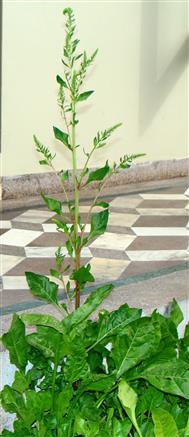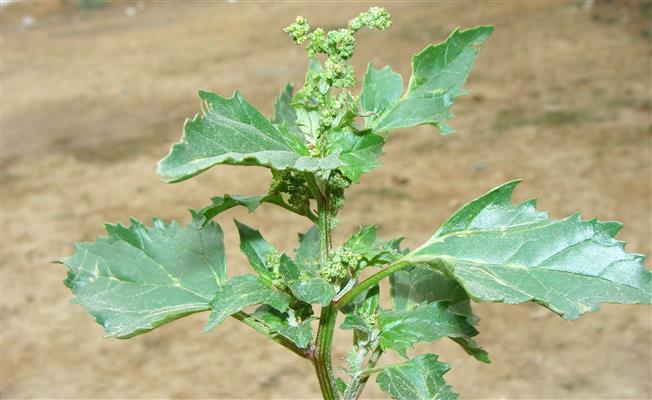CHENOPODIACEAE**
Annual or perennial herbs, subshrubs, shrubs or small trees, often with a meal-like covering. Leaves alternate or opposite, exstipulate, petiolate or sessile; leaf blade flattened, semiterete or terete, sometimes reduced to scales. Flowers minute, often greenish, monochlamydeous, actinomorphic, usually bisexual, rarely unisexual, hypogynous, solitary or in clusters, often arranged in spicate or paniculate inflorescences; bracteate and often bracteolate. Tepals (3 or) 5, free or connate at base, rarely 0, persistent or not. Stamens 5, rarely fewer, shorter than or equalling and opposite the tepals, free or basally united into a hypogynous disc, sometimes with distinct interstaminal lobes (staminodes); anthers bithecous, dehiscence longitudinal. Carpels 2-5, syncarpous; ovary superior, ovoid or globose, unilocular with 1 ovule; style terminal, usually short, with 2(-5) filiform or subulate stigmas. Fruit an utricle, rarely a pyxidium, seated on or enclosed by more or less thickened perianth or bracteoles (valves), pericarp membranous, leathery or fleshy, adnate or appressed to seed. Seed solitary, vertical or horizontal, usually reniform, testa crustaceous, leathery, membranous or succulent, endosperm much reduced or absent, perisperm abundant or absent.
About 100 genera, 1200-1500 species
** Now this family is treated under the family Amaranthaceae


